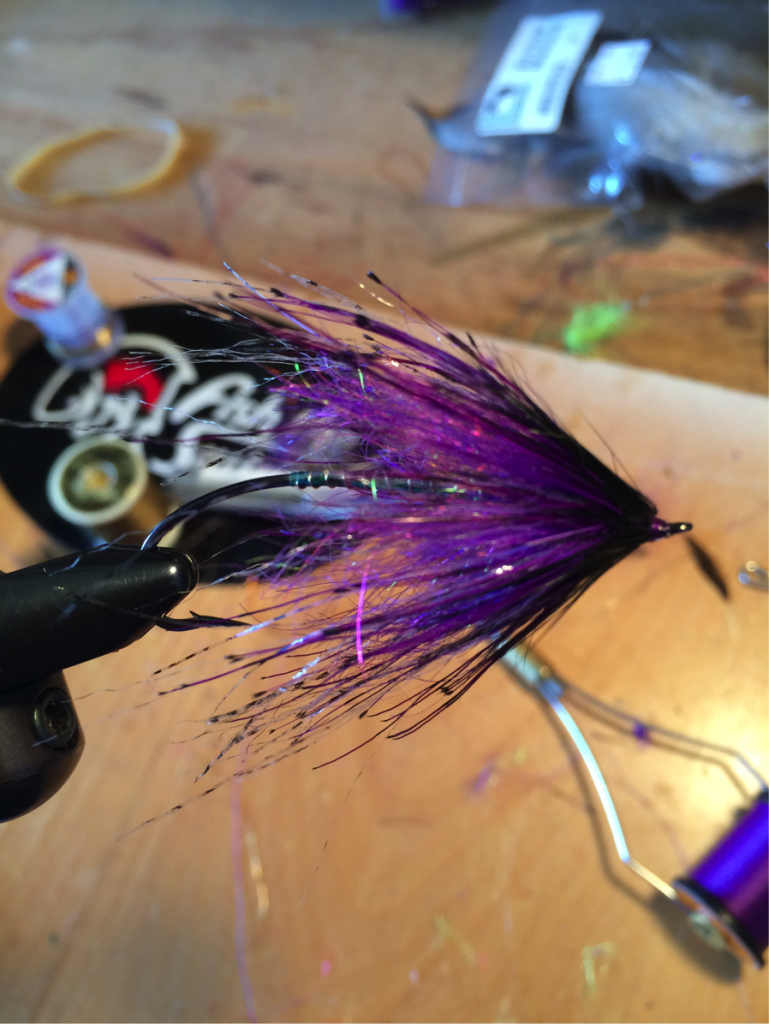You’ve heard it said that confidence is everything when it comes to catching, landing and releasing steelhead. Every season this idea grows and grows on me as I learn more about flies, fish and reading water. I’m sure general confidence is helpful, but I’d like to make a few recommendations that may help your confidence grow in the area of fly choice.
Let me start by stating that I used to carry the kitchen sink while out steelhead fishing, knowing that I may have to change my fly multiple times throughout the day. If one was not working, I’d loose confidence in it. If I went through three or four flies I would find myself in a bit of a neurosis, trying to dig to find that just right pattern. The truth is any fly with a hook will work, but some flies just seem to work better than others.
After spending countless hours on the vice I’ve learned that contrast, profile, and movement are the three key ingredients to a fly that will entice even the most reluctant steelhead. Warning, just because a fly looks super buggy at the shop doesn’t mean it will fish that way. Many flies are tied for the shop, not for the river. In order to achieve profile and movement a fly has to have the perfect mix of material. As I look back through my old boxes of flies, I find myself wanting to bust out my scissors and cut out material in order to reduce the amount of feathers or dubbing. I’ve learned that less really means more when it comes to flies. The new rule of thumb is: Less material, especially less of the same kind of material. Don’t ever tie on two of the same feathers, especially marabou. Why? It may appear to provide profile, but it won’t have the correct movement because marabou likes marabou, so it sticks together. Build profile with strong shoulder of dubbing or hackle, then tie your marabou in sparsely. You’ll be pleased with the difference in profile and movement.
The best day I’ve ever had steelhead fishing came when I put on a size 7 sparsely tied skunk pattern. The fish just couldn’t seem to leave it alone. Here’s why a small fly beats a big fly in clear water conditions most days. First, it’s subtle…I believe steelhead often act like a playful cat, chasing something down out of curiosity and then swiping at it. Something small triggers a fish’s curiosity. “What was that little thing that just swam by?” They then go in search of it and often times decide to take a swipe. A big fly triggers a completely different set of instincts for a fish, the protector, aggressor instincts. In clear water, fish are less likely to get super aggressive, as they don’t feel as safe. A small, sparsely tied fly will become your go to pattern once you begin to experience the curiosity of steelhead. You’ve probably seen videos of fish coming up and hitting at flies, only to return again and again on consecutive casts.
I’ve included a picture of one of my profile flies. I tie it in such a way that the materials repel each other, so that the front hackle actually bounces off the dubbing ball creating a large profile and lots of movement in the water. Additionally, the black head provides a great contrast to the purple body for low visibility situations. I have great confidence swinging this fly, plus I know no one else is swinging it because it cannot be purchased in the store and I have yet to see anyone build a fly that has the same compilation of materials as this one. So, when I step into a run that has already been fished, I’m casting with 100% confidence in my choice of flies. I’m sparser, buggier and better contrasting than most of what the fish have seen ahead of me.

